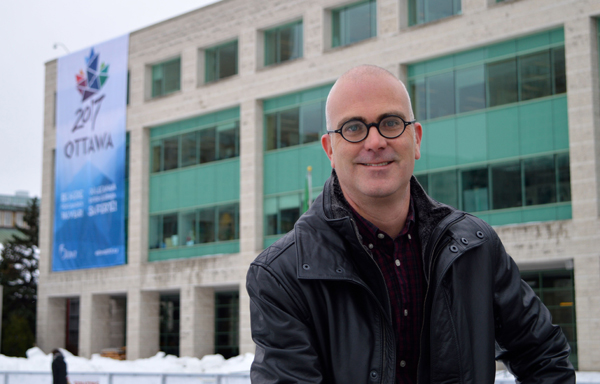
By Maureen McEwan
By 2046, the City of Ottawa predicts that the population will increase by over 400,000 residents.
To accommodate the anticipated growth, city council voted 15-6 last week to expand the urban boundary and include higher intensification targets in its Official Plan.
Kitchissippi Coun. Jeff Leiper said all municipalities have to plan for how they will adapt to population growth.
“We have to demonstrate that we have a plan to accommodate them,” he said. “And, at all times, cities in Ontario are required to be able to demonstrate that they have a 15 year supply of land, according to their projections, available for development.”
The urban boundary expansion looks at increasing the amount of land in Ottawa that is available for the development of new suburbs, beyond the current city limits. Based on the city’s projections, to accommodate growth for 15 years, a proposal came forward. Leiper said it required a “mix” of adding approximately 1,200-1,600 hectares of new land and an increase in intensification targets.
Leiper and councillors Menard, McKenney, Fleury, King and Kavanagh were the six who voted against the expansion. The councillors were in favour of higher intensification and the development of lands within the current boundary. According to the city’s data, Leiper said there was enough land in those suburbs to build about 64,000 new homes.
“So the approach that a number of us said, [that] would be preferable to expanding the urban boundary, would be to accomplish it all by intensification and filling out the lands that are already available but currently vacant.”
Historically, Leiper said that new suburbs have put a “burden on the taxpayer.” As new areas are built up, infrastructure is put in place, like parks, pipes and roadways, with the initial capital costs typically paid for by the home buyer through the developer. But as infrastructure ages, it becomes the financial responsibility of the taxpayer to maintain — Leiper said the added value of new homes on the tax roll “doesn’t keep up.”
“Over the course of the last 70 years or so, what you’ve seen is that municipalities, right across North America, have a growing ‘‘infrastructure gap.’” he said. “That is to say, we are falling further and further behind on maintaining the infrastructure that we have — replacing roads, replacing water mains, replacing sewers. And then the expense of running new fire stations, new libraries, is an immediate cost to the taxpayer as well that doesn’t always get met by the increased value of taxes from having new households.”
The option to maintain a downtown, intensive city core with transit and essential services is both more financially and environmentally sustainable than it is to expand, Leiper added.
“I think we had an opportunity to reverse course on that, to adopt an approach to growth that we know is much more sustainable.”
While he’s disappointed with the voting outcome, the issue had a “very good hearing” with the residents of Ottawa. There was significant council debate and community engagement.
As an urban ward, Leiper said Kitchissippi would have seen higher intensification regardless of whether the city expanded the urban boundary or not.
“By 2046, we’re expecting the population of Ottawa to grow by 40 per cent. And there’s no car-centric way to make that sustainable,” he said. “And so, it does mean that we have to have a much greater level of intensification and one of the very first places where that intensification has been occurring, and will continue to occur, is Kitchissippi ward.”
At council, Leiper said they often discuss the idea of “15-minute communities” — dense neighbourhoods with quick access to transit and amenities on “great main streets.” These are the areas the city wants to see intensify and Leiper said that Kitchissippi is already there.
“We’re really well-served by LRT. This is where the city wants people to live because you can live more sustainably in a community that is well-served with walkable, compact, amenity-rich features. So no matter how the vote turns out, we are going to see higher levels of intensification in wards like Kitchissippi.” he added.
“And that’s difficult for Kitchissippi ward,” he added. “It’s been traumatic already for residents because the ward has changed so much and there is further change to come.”
Leiper said one of the “encouraging things” to come out of last week was council’s recognition that development had to change and that a “comprehensive” Zoning Bylaw Review is needed for the entire city.
“If we’re going to have higher intensification, we need to map out for residents what that is going to look like,” he said. “And then once we’ve mapped it out, in light of the newest population projections and in light of our intensification targets we’ve adopted, then you have to stick with that zoning.”
Moving forward, Leiper anticipates that the Official Plan will be passed in the summer of 2021 and city staff will then begin working on the Zoning Bylaw Review. Following that, the specific parcels of land will identified for the urban boundary expansion.
